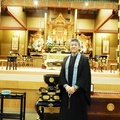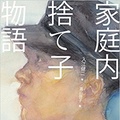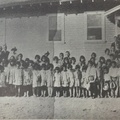The history of Japanese-American soldiers during World War II is best known for the 442nd Combat Team, which served on the European front. However, during the training stage before being sent to the European front as part of the 442nd, 21 Japanese-American soldiers were charged with treason, sentenced to prison, and dishonorably discharged for refusing combat training.

(Photo by Azuma Shigeharu)
The first book about the punished Japanese soldiers was published in 2012, and they finally became known among Japanese people in Los Angeles. On September 12, 2015, at the Tateuchi Forum in the Japanese American National Museum, about 20 family members of the punished former soldiers and one former soldier appeared in public for the first time at a symposium co-hosted by the Japanese American National Museum and Go for Broke, a non-profit organization that aims to preserve the achievements of the 442nd Regimental Corps.
The symposium was titled "A Different Kind of Courage."
It is well known that during World War II, a Japanese American unit (the 442nd Combat Team) was formed within the U.S. Army by recruiting second-generation Japanese volunteers from Japanese American internment camps. However, even before the outbreak of war between the United States and Japan following the Japanese attack on Pearl Harbor, and before the Japanese American unit was formed, hundreds of second-generation Japanese and kibei second-generation Japanese (second-generation Japanese born in the United States and educated in Japan) had already joined the U.S. Army.
When the war between Japan and the United States began in December 1941, Japanese-American soldiers, especially the second generation who returned to the United States, were treated as non-believers within the U.S. military because they were from an enemy country. Japanese-American soldiers were given unarmed jobs such as waste disposal, cleaning toilets, weeding, and portering.
Then, an incident occurred that put a final nail in the coffin for the Japanese-American soldiers who had been treated unfairly in the military. When President Roosevelt visited Fort Riley Army Base in Kansas in 1943, while all the soldiers at the base were being reviewed by the President, about 130 Japanese-American soldiers were isolated and detained for several hours because they were feared to be a threat to the President.
Japanese-American soldiers were then gathered at Fort McClellan in Alabama to train as the 442nd Combat Team, which would be deployed to the European front. On March 20, 1944, there were about 600 Japanese-American soldiers at McClellan, and on that day, 106 Japanese-American soldiers were arrested after refusing to participate in combat training in protest against discriminatory remarks made by their superiors. Of these, 28 were indicted, and 21 were charged with treason and sentenced to 5 to 36 years in prison and forced labor.
All second-generation soldiers who had served prison sentences were released from military prisons through a presidential pardon after the war, but they were branded with a dishonorable discharge.

Of the 21 former Japanese-American soldiers who were punished, 11 took 40 years to appeal their cases to the U.S. Army and have their honor rehabilitated. However, this fact remained unknown among Japanese-Americans until the publication of the book Nisei Soldiers Break Their Silence by Dr. Linda Tamura, a professor at Willamette University in Oregon, in 2012.
The symposium, "Another Courage," featured panelists Dr. Linda Tamura, Paul Minelick, an attorney who handled lawsuits seeking the rehabilitation of former soldiers who had been punished, and Gary Itani, the eldest son of a former soldier who served as president of the Los Angeles chapter of the Japanese American Citizens League (JACL), among others.
Most of the former soldiers who were punished have already passed away, but at the symposium, 95-year-old Fred Sumoke (pictured) and about 20 family members of the soldiers who died during the punishment appeared in public for the first time.
On behalf of Go for Broke, exhibit manager Chris Brusatte said, "In the history of Japanese American soldiers, soldiers who were punished are in a position that is the polar opposite of the soldiers of the 442nd, but both the decision to go to the battlefield and the decision to refuse to go to the battlefield were courageous decisions. As part of Go for Broke's efforts to record the achievements of Japanese American soldiers and pass on their experiences to future generations, we must also pass on the experiences of soldiers who were punished."
Related Books
Nisei Soldiers Break Their Silence: Coming Home to Hood River by Linda Tamura, University of Washington Press
© 2015 Shigeharu Higashi





